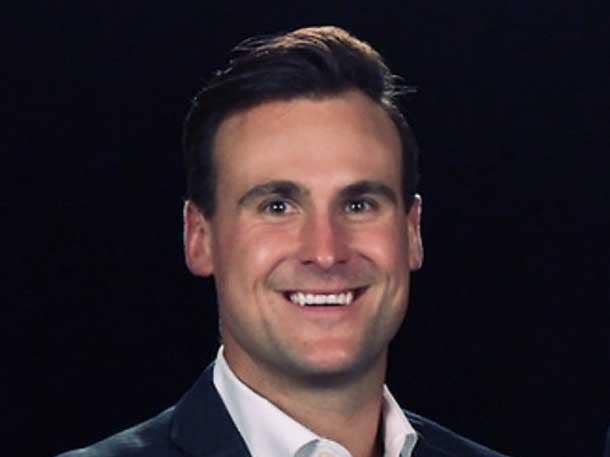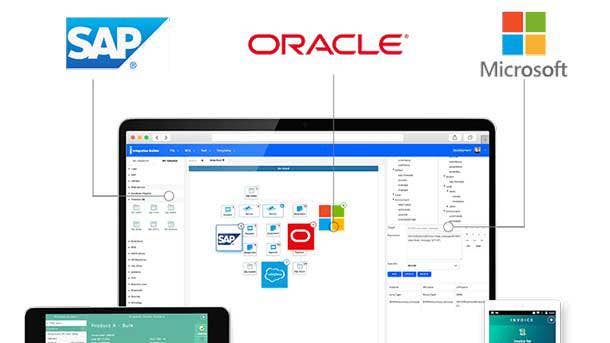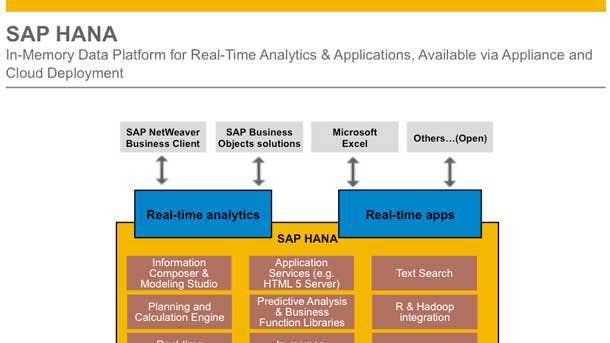Pillir’s Breakthrough SAP Low-Code EdgeReady Cloud Platform: 9 Things You Need To Know
Pillir Chief Revenue Officer JR Butler says the new low-code EdgeReady Cloud platform reduces the total cost of ownership on an SAP platform by 30 percent and increases the speed of application development by a factor of 20 times.

‘First-Ever’ Low-Code SAP Cloud Platform
The “massively disruptive” Pillir low-code platform—which eliminates decades of high-cost, proprietary SAP Advanced Business Application Programming (ABAP) proprietary code—is paying big dividends for SAP customers anxious to migrate to a modern cloud architecture, said Pillir Chief Revenue Officer JR Butler in an interview with CRN.
“We have the first-ever low-code platform that takes that [ABAP] logic and translates it automatically to a low-code object that runs in the cloud,” said Butler.
That low-code game-changer is fundamentally rewriting the long-standing rigid economics of moving complex SAP ERP systems to the cloud, said Butler. That means finally giving customers a way to get out from spending as much as 80 percent of their SAP IT budgets on maintaining current SAP environments, he said.
The Pillir EdgeReady cloud platform has forever changed the way that customers are modernizing their IT environment, said Butler.“Getting rid of custom code saves 30 percent of the total cost of ownership of managing SAP, no matter where it runs—on-premises or in the cloud,” he said.
The new Pillir platform also speeds up SAP application development by a factor of 20 times by moving customers to a low drag-and-drop scratch object platform that opens the door for nonprogrammers to add business processes to SAP, said Butler.
“What we are doing is democratizing enterprise IT and accelerating the speed to market for business transformation,” said Butler. “It is literally digitizing the way you are running your business, truly democratizing it for your business stakeholders.”
Here are nine things Butler said partners need to know about the Pillir low-code SAP revolution.

Opening Up The SAP Mission-Critical ‘Holy Grail’ To Resellers
Our new EdgeReady Cloud essentially takes a massively disruptive approach. We take legacy programming language that has been written into your SAP ERP—which is proprietary—and we actually translate the [ABAP] logic that you have spent the last three decades building into your system, which we call ‘technical debt,’ and we automatically convert it to cloud-based low-code objects.
Because you can take a low-code approach to a very proprietary system like SAP—because of our ability to translate proprietary code—it opens the door for regular resellers to finally get to that holy grail: that mission-critical SAP system.
This approach is going to change the way that customers are modernizing their IT environment—the way they are digitally transforming—because they are currently spending 80 percent of their budget just keeping the lights on with languages like ABAP, Cobol, .Net, RPG, Assembly. We have the first-ever low-code platform that takes that logic and translates it automatically to a low- code object that runs in the cloud. We have 125-plus man-years of product development built into this platform.
In terms of the code translation, it reads the syntax of ABAP and it translates it into what we call a ‘common modernization language.’ That language then becomes low-code objects.

Eliminating The High Cost Of Custom SAP Code
The average SAP customer has about 10,000 to 20,000 custom lines of code minimum in their system that they are constantly testing for any change. When you get into going to SAP S4 HANA cloud ERP, it is game over—40 percent of your costs is managing all the custom code you have built over many years. What we do is actually go in and take that custom code out of your system so now your system is standard so you can make changes quicker. Now your custom programs live in the code—no matter where your SAP system is. It is much more modern. We do that automatically.
Getting rid of custom code saves 30 percent of the total cost of ownership of managing SAP, no matter where it runs—on-premises or in the cloud. That’s 30 percent of the total cost of ownership in terms of people needed to support the system with changes or infrastructure. All the things that come with the total cost of ownership of SAP can be reduced by 30 percent with this approach to what we would call ‘an incremental migration to the cloud.’

Speeding Up SAP Application Development
With our platform you can develop mission-critical SAP applications 20X faster. Today if a business wants to add a field to an SAP application, it is an eight-week project. With us that is two hours.
One of our customers had scoped out a project to build a new product introduction application integrated with SAP. It was going to take them nine months and 3,000 man-hours. We did it in five weeks in less than 300 man-hours. You are talking about taking projects that took six to nine months down to four to six weeks literally.
What we have done is take something that has for the last 30 years been massively proprietary and closed and moved it into a drag-and-drop model. We’re democratizing the mission-critical system.
Now as a partner you can be the bridge between the business and the application service they are looking for. You no longer have to go through the normal route to solving business problems. Now you can have a conversation directly with the business about a technology that actually solves their problem and speaks their language. They don’t care about speeds and feeds and bits and bytes. Low code is upleveling every single one of the conversations partners are having. The monetary opportunity is massive.

Proving It To Customers With Partner-Led Assessments And Mission-Critical Proofs Of Concept
We work through partners and have a no-cost evaluation process. We have this really cool dashboard we deploy that shows every single custom object they have in their SAP system. It takes an hour to stand up. It shows all your custom reports, programs and what modules are most customized. We also have a calculator that shows the cost of that custom code. This is really disruptive. It is a really unique approach just like virtualization was, just like deduplicated backup was, just like shared file system was. Those are all enterprise standards now. When those were first sold you had to lead with assessments to show customers their pain. We are doing the same thing with custom code. We are taking an infrastructure-led assessment approach showing customers all the custom code they have in their environment.
We ask customers what is their most complex and disruptive custom program, and we start there. We do the hardest one first, which is really unique. What we are doing is going after the hardest, most mission-critical process first to prove to customers that it works and we can do it fast.

A 100 Percent Channel Model With Double-Digit Margins
My first job in this business was as a sales rep for a solution provider. I am the one building our partner program. We guarantee double-digit margin and we do not want to be a services company. My goal is within six to nine months to have everything 100 percent driven by partners. We are never going to do a direct deal ever.
Our channel program is critical to our success. I have always sincerely believed you are either a channel company or you are not. There is no halfway when it comes to the channel. The second you introduce competitiveness between your direct sales force and the channel it creates conflict that is unnecessary.
From day one we are going all in with the channel. I spent too long building relationships as a solution provider. I understand the amount of time that a channel partners cuts off on the sales cycle for a product company because of the presales work they put in and the trust they have built with the organizations they work with. It is a no-brainer.

Changing The SAP Sales Dynamic For Partners
The traditional SAP upgrade has always been a compelling event-driven business. So when a customer decides to go to cloud or a new version of SAP, many different SAP consulting firms will go compete for that business. It is a request for proposal [RFP]-driven business. The thing that is unique about our business is we can go in with our dashboard and show a customer all the custom code they have in their SAP system. We can show them how much it is going to cost over the next five years to manage this custom code, to maintain this custom code and to make changes in their system.
SAP consulting firms can now go in and create a deal for the first time ever with this [Pillir] dashboard information. That means services and recurring revenue from the software side, which is the holy grail. We are a subscription-based service. We don’t want to do services. So these SAP consultants can now offer application managed services around our platform. So you are getting recurring revenue with double-digit margins and you are getting recurring software project work and recurring managed services work.
For the first time ever you can do this without a compelling [SAP upgrade or purchase] event from the customer. That is the most exciting thing for SAP partners. Now they can go in and create deals on their own for the first time ever in the history of SAP.

The Partner Opportunity: Billions Of Dollars
The channel opportunity is billions of dollars. It is massive. The growth is incredible. Our ability to translate proprietary [ABAP] code has opened the door for regular resellers to finally get to that holy grail: the mission-critical SAP system.
In the SAP world, there are very few companies with benches of SAP-driven skill sets. One hundred percent of these companies running SAP are looking to the channel, asking partners about how they can make a change in SAP. We want to be in front of those channel partners that are getting those questions from customers.
There are only 40,000 ABAP programmers in the entire world, with 77 percent of world transaction revenue touching an SAP system at some point. Yet there are only 40,000 people that know how to make an SAP system work the right way and there are over 4 million JavaScript developers. This opportunity for partners is massive because there are not enough resources for customers to solve their SAP problems. As the go-to-market leader in this low-code market for SAP, I don’t see a way we can be successful without our channel partners being successful. I believe that 100 percent.

Democratizing Digital Transformation
What our low-code platform really offers is the democratization of digital transformation. The product is based off the scratch programming language. It is a programming language written by MIT for children. So literally people 6 years old to 12 years old can use this scratch programming language to build applications. We are taking that approach to building enterprise-level mission-critical systems. So now all of a sudden when you take this approach you are getting the business to impact your applications versus IT being the bridge. The reason the cloud took off is because the developers didn’t have to wait for the server team to get back to them. The reason virtualization took off before the cloud is because it was easier to spin up a VM than to go buy a physical server. This is just the next rational move to respond to business requests faster—how do we meet the changing demands of our customers and our employees as quickly as humanly possible.
It is just like everything else—it has moved up the stack. It used to be, ‘I don’t want to buy a physical server; I want to spin up a VM.’ Then it was, ‘I don’t want to wait for IT to spin up a VM; I want to swipe my credit card and get an EC2 instance in AWS.’ Now it is, ‘I don’t want to wait for a developer to build my application. I want to log into Pillir and build an application for plant maintenance myself.’ What we are doing is democratizing enterprise IT and accelerating the speed to market for business transformation. That is what it really comes down to. It is not so much a story of on-premises to cloud, it is literally digitizing the way you are running your business, truly democratizing it for your business stakeholders.

Stoking The ‘Channel Fire’
When I joined the company, there was no partner program. I have moved every deal through the channel. We are not doing deals direct. We are using our existing customer base to stoke the channel fire. We are telling our customers that our partners not only know Pillir really well, but also can help provide artificial intelligence for these new applications. Not only are we creating revenue streams for Pillir, they are also driving revenue on other systems from Pillir. They are getting closer to machine learning and data analytics.
Pillir opens so many other doors to partners in an SAP system that has been typically been closed to partners. When you digitize and convert ABAP code on Pillir, that opens the door to other cloud services.
There is zero up front cost for a partner to build a solution. They don’t have to pay us something until something goes to production. There is zero financial risk for partners to engage us. We train them on the platform and make sure their team is up to speed and can develop the applications the enterprise needs.